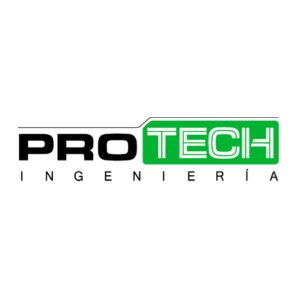RFID technology (Radio Frequency Identification) has brought about a significant change in the way organizations handle information related to asset tracking and control. This innovation has directly impacted data management, enabling a transformation of traditional methods and optimizing the management of operational information.
By using radio signals to identify and track objects remotely, RFID technology enables information to be collected automatically, without direct contact. This feature has led many industries to adopt this solution to improve the efficiency of their processes and the accuracy with which they access and update their critical information.
The following section will provide a detailed explanation of what RFID technology is, how it works, and the advantages it offers to organizations, especially regarding data management and administration.
What is RFID technology and how does it work?
RFID technology is based on a wireless system that enables data transmission through radio waves. This communication occurs between a tag, placed on a physical object, and a reader device that receives the information.
These labels, known as tags RFID, are composed of a microprocessor that stores specific data about the object to which they are attached, and an antenna that facilitates the transmission of this information to the reader. Unlike conventional barcodes, reading the labels through RFID technology does not require direct visibility, allowing for much more efficient and faster data collection.
The operation of the system based on RFID technology consists of three fundamental elements that enable interaction and information processing:
- Tag or RFID label: This is the physical element that contains the object's data and transmits it via radio waves to the reader.
- RFID reader: This is the device responsible for emitting signals to communicate with the tags and receive the data stored in them.
- Information management system: This is the software that receives and organizes the collected information, which can be integrated into administrative processes or decision-making.
When an RFID tag is within the reader's range, the reader emits a radio frequency signal that activates the tag. Immediately, the tag sends the data stored in its chip, which is captured by the reader and then transmitted to the enterprise information system for processing. This entire cycle takes place in just a fraction of a second, allowing real-time traceability of objects to be continuously updated thanks to RFID technology.
How is a transponder based on RFID technology constructed?
RFID transponders, which are the components that store and transmit information, can be designed in a wide variety of shapes, sizes, colors, and materials depending on their specific intended use. However, they all share one essential feature: the presence of an electronic chip and an antenna, commonly referred to as an inlay.
Inside any RFID-based transponder, there is at minimum a microchip that contains the encoded information, along with a printed or assembled antenna responsible for transmitting the data signal. Both components are highly sensitive to extreme physical and environmental conditions—such as impacts, high temperatures, or exposure to chemicals—so they must be encapsulated appropriately according to their intended purpose.
In many cases, the simplest and most cost-effective form of encapsulation is the RFID adhesive label, which is sufficient for numerous commercial or industrial applications. However, more robust forms can also be found, depending on the demands of the environment.

Applications of RFID technology that impact information management across various industries
The versatility of RFID technology has allowed it to become firmly established across multiple sectors, optimizing data collection, analysis, and accuracy in information management. Below are some of the most common applications:
Logistics and inventory
In the logistics sector, RFID technology is used to monitor the movement of products in real time, from storage to the point of delivery. This immediate document traceability facilitates more organized inventory management, reducing human error and optimizing stock levels. As a result, access to and analysis of operational information is significantly improved.
Retail (Commerce)
In stores and large retail chains, RFID technology enhances the customer experience by enabling quick product location, real-time inventory updates in seconds, and the use of self-checkout systems. Management in this context becomes more agile, transparent, and useful for strategic decision-making.
Healthcare sector
RFID technology has become a crucial tool for tracking medical instruments, managing pharmaceutical inventories, and ensuring accurate patient identification. These processes create a safer, more reliable, and more organized hospital environment from a data management perspective.
Access and security systems
Using RFID cards or devices, it is possible to control who enters or exits specific sensitive areas such as laboratories, offices, or industrial plants. This not only increases physical security but also generates electronic records that strengthen information systems related to monitoring and access control.
Benefits that RFID technology brings to business and information management
The implementation of RFID technology in corporate environments brings a series of direct benefits for information management and analysis:
-
Greater operational visibility and asset traceability
The data collected by the system allows for precise control over the movement of products at each stage of the supply chain.
-
Reduction of errors and losses
By automating data capture, human-related errors are reduced, and constant monitoring lowers the likelihood of misplacement or theft.
-
More efficient inventory control
RFID technology makes it possible to know exactly how many products are available, where they are located, and what condition they are in, which facilitates more accurate planning.
-
Better customer service
By improving response times and ensuring product availability, end-user satisfaction increases.
-
Integration with enterprise systems
RFID technology can be connected to platforms such as ERP or WMS, allowing information to flow automatically between production, logistics, and sales departments.
Classification of RFID technology according to its operating frequency
RFID technology is also categorized according to the radio frequencies it uses to transmit data:
- LF (Low Frequency – 125 kHz): It has a short reading range and is ideal for access control or animal identification.
- HF (High Frequency – 13.56 MHz): Commonly used in public transportation cards and contactless payment systems.
- UHF (Ultra High Frequency – 860–960 MHz): Offers a longer reading range, making it useful in logistical, industrial, commercial, and medical applications.
Types of RFID tags
RFID tags, within the framework of RFID technology, are also classified according to the type of power source they use:
- Passive tags: Operate only when they receive power from the reader. They are cost-effective and widely used.
- Active tags: Contain a built-in battery that allows them to continuously transmit signals, even when not in close proximity to a reader.
- Semi-active tags: Equipped with an internal battery but require an external signal to activate. They combine energy autonomy with controlled activation.
Key differences between RFID, NFC, and barcode technology
Although RFID technology shares similarities with other technologies, it stands out for several reasons:
- RFID vs NFC (Near Field Communication): NFC is a short-range variant of RFID designed for close-contact applications such as mobile payments or secure identification. One advantage of NFC is that the same device can function as both a reader and a tag.
- RFID vs Código de Barras:
- El RFID no necesita línea de visión, el código sí.
- Los datos en RFID se pueden actualizar en tiempo real, en el código no.
- El RFID requiere energía (lector o batería); el código no.
- RFID es más veloz (100 milisegundos por lectura).
- RFID es más duradero y difícil de dañar.
Optimize your information management with RFID technology!
Transform your business processes with smart tracking, traceability, and real-time control solutions. In an environment where accurate information is key, RFID provides the visibility your organization needs.
Contact us today
Take the first step toward more efficient, automated, and secure management.








